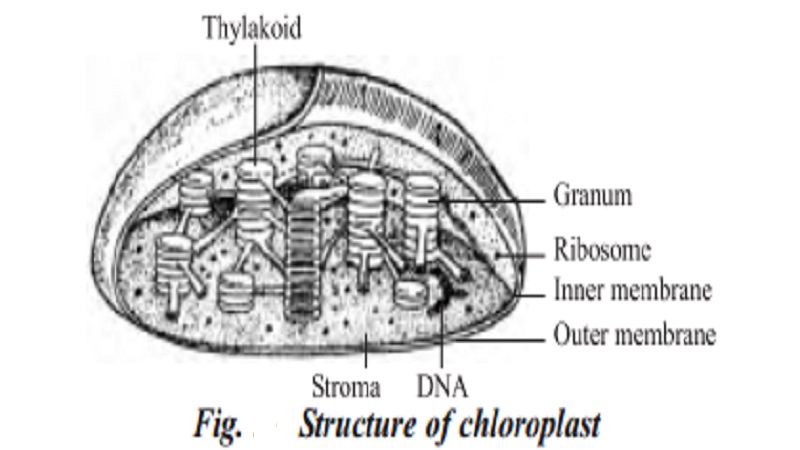Chapter: 11 th 12th std standard Bio Botany plant tree Biology Higher secondary school College Notes
Site of photosynthesis

Photosynthesis
Photosynthesis literally means 'synthesis with the help of light'. It is the process that gives life to all living beings. The plants convert light energy into life energy. It is the only biological process that makes use of sun's light energy for driving the life machinery. Hence, photosynthesis is regarded as 'leader' of all processes both biological and abiological. It is the most fundamental of all biochemical reactions by which plants synthesize organic compounds in the chloroplast from carbondioxide and water with the help of sunlight. It is an oxidation-reduction reaction between water and carbondioxide
Site of photosynthesis
Chloroplasts are the actual sites for photosynthesis. All green parts of a plant are involved in photosynthesis. Leaves are the most important organs of photosynthesis. In xerophytes like Opuntia, the stem is green and it performs photosynthesis. Over half a million chloroplasts are present in one square millimetre of a leaf. It measures about 4 to 6 micron. A
It is a double membrane bound organelle containing chlorophyll, carotenoid, xanthophyll, cytochrome, DNA, RNA, manganese, etc. Chloroplasts are generally considerably larger than mitochondria.
The space enclosed by the envelope is filled with matrix called stroma. In the stroma, many grana are embedded. In each granum, several disc shaped lamellae are found. These disc shaped structures are called thylakoids. They resemble a stack of coins. This structure is known granum. Generally a chloroplast contains 40 to 60 grana. The photosynthetic pigments are found in grana. The stroma contains circular DNA, RNA and enzymes for starch synthesis.
Related Topics